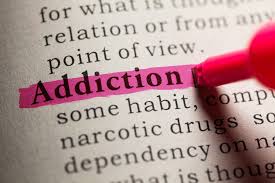Addiction is a powerful force that can hijack the brain, reshape behavior, and disrupt lives. Whether it’s substance use (like alcohol, drugs, or nicotine) or behavioral addictions (such as gambling, gaming, or social media), addiction affects millions worldwide. But what actually causes addiction? Is it a moral failing, a lack of willpower, or something deeper?
This article takes a scientific look into what causes addiction, focusing on the brain’s structure, chemical processes, psychological patterns, and social factors that contribute to addictive behaviors.

What Is Addiction?
Addiction is a chronic, relapsing disorder characterized by a compulsive need to seek out and use a substance or engage in a behavior, despite harmful consequences. It’s not just about liking something—it’s about losing control over it.
The American Psychiatric Association defines addiction (often referred to clinically as substance use disorder or behavioral addiction) as a complex condition involving both physical and psychological dependence. Over time, people with addiction often experience:
- Intense cravings
- Tolerance (needing more of the substance for the same effect)
- Withdrawal symptoms
- Neglect of personal responsibilities
- Continued use despite negative consequences
Addiction is not a choice; it’s a brain disorder influenced by a combination of biology, environment, and behavior.
How the Brain Processes Reward
To understand addiction, we must start with how the brain processes pleasure and reward.
At the core of this system is the mesolimbic dopamine pathway, often called the brain’s “reward circuit.” It includes:
- Ventral tegmental area (VTA): Produces dopamine.
- Nucleus accumbens: Processes feelings of reward and motivation.
- Prefrontal cortex: Involved in decision-making and self-control.
When you do something enjoyable—like eating, laughing, or listening to music—your brain releases dopamine, a neurotransmitter associated with pleasure, motivation, and learning. This reinforces the behavior, making you more likely to do it again.
Substances like alcohol, opioids, nicotine, and cocaine hijack this system by flooding the brain with dopamine, far beyond natural levels. Over time, the brain adapts by reducing its sensitivity to dopamine, making it harder to feel pleasure from normal activities. This process is called tolerance.
What Makes the Brain Addicted?
Addiction doesn’t happen overnight. It develops over time through repeated exposure and changes in brain chemistry and structure. Here’s how:
1. Increased Dopamine and Reinforcement
Every time a person uses an addictive substance or engages in a rewarding behavior, the brain learns that it leads to a pleasurable outcome. This reinforcement loop strengthens the desire to repeat the action, even when the pleasure decreases over time.
2. Hijacking the Prefrontal Cortex
The prefrontal cortex is responsible for rational thinking, impulse control, and decision-making. In people with addiction, this region becomes less active, making it harder to resist cravings or weigh long-term consequences. This is why addiction often overrides logic and self-control.
3. Emotional Triggers and the Amygdala
The amygdala, a brain region involved in processing emotions, plays a key role in triggering cravings—especially in response to stress, trauma, or negative emotions. This leads many people to use substances as a way to self-medicate anxiety, depression, or PTSD.
4. Memory and Conditioning
The hippocampus helps form memories associated with drug use. Environmental cues (such as places, people, or objects) become linked to the addictive behavior, creating powerful triggers for relapse, even after long periods of sobriety.
Risk Factors: Why Some People Are More Vulnerable
Not everyone who drinks alcohol or gambles becomes addicted. Several risk factors increase vulnerability to addiction:
1. Genetics
Studies suggest that genetics account for up to 50% of addiction risk. Variations in genes affecting dopamine receptors, metabolism, or stress response can predispose someone to addictive behavior.
2. Early Life Experiences
Adverse childhood experiences (ACEs), such as abuse, neglect, or family dysfunction, significantly increase the risk of addiction later in life. Trauma can alter brain development and make individuals more susceptible to using substances to cope with pain.
3. Mental Health Conditions
People with depression, anxiety, bipolar disorder, or ADHD are more likely to develop addiction. This co-occurrence is known as dual diagnosis, and it often requires integrated treatment.
4. Social Environment
Peer pressure, family modeling, easy access to substances, and lack of supportive relationships can all contribute to the development of addiction.
The Role of Tolerance, Dependence, and Withdrawal
Understanding these three concepts is crucial:
- Tolerance: Over time, the brain becomes less sensitive to the substance, requiring more to achieve the same effect.
- Physical Dependence: The body adapts to the substance and needs it to function normally.
- Withdrawal: When use stops, the body experiences physical and emotional symptoms—such as anxiety, shaking, nausea, or depression.
These symptoms make quitting incredibly difficult, even when someone wants to stop.
Behavioral Addictions: When Actions Become Compulsions
Not all addictions involve substances. Behaviors like gambling, porn use, eating, gaming, and social media scrolling can also become addictive. These behaviors activate the same dopamine-driven reward circuits in the brain.
For example, slot machines and social media platforms are designed using variable rewards—unpredictable and intermittent reinforcement that’s especially effective at driving compulsive behavior, similar to how a drug might work.
Behavioral addictions can lead to similar patterns of tolerance, withdrawal, and loss of control as substance addictions, even though no chemical is being ingested.
The Cycle of Addiction
Most addictions follow a predictable cycle:
- Trigger or craving: Emotional, physical, or environmental cue.
- Use or behavior: The addictive act is performed.
- Temporary relief: Brief pleasure or escape.
- Negative consequences: Guilt, health issues, relationship problems.
- Renewed craving: The cycle repeats.
Breaking this cycle requires not just willpower, but biological, psychological, and social interventions.
Can the Brain Recover from Addiction?
Yes, but it takes time. The brain is remarkably plastic, meaning it can change and heal. Recovery involves:
- Neuroadaptation: Over time, the brain can rebalance its chemical systems and regain sensitivity to dopamine.
- Cognitive retraining: Therapy helps rewire thought patterns and decision-making.
- Behavioral change: Developing new coping mechanisms and routines strengthens new neural pathways.
- Support networks: Connection with others in recovery reduces isolation and increases accountability.
Relapse is common—often seen as a normal part of the recovery process, not a failure. Every attempt at recovery teaches the brain and body how to adapt and grow stronger.
Treatment and Support
Addiction is treatable, especially with a combination of methods:
1. Behavioral Therapies
- Cognitive-behavioral therapy (CBT): Helps individuals recognize and change negative thought patterns.
- Motivational interviewing: Builds internal motivation to change.
- Contingency management: Uses rewards to encourage sobriety.
2. Medication-Assisted Treatment (MAT)
- Methadone and buprenorphine for opioid addiction
- Naltrexone for alcohol and opioid use
- Nicotine replacement therapies for smoking
3. Support Groups
- 12-step programs like Alcoholics Anonymous (AA) or Narcotics Anonymous (NA)
- SMART Recovery, a science-based peer support program
4. Holistic Approaches
- Mindfulness, meditation, exercise, and nutrition can improve mental and physical health, making recovery more sustainable.
Final Thoughts: Addiction Is a Brain Disease, Not a Moral Failing
Addiction is often misunderstood. It’s not about weak character or poor decisions—it’s about how the brain is wired and rewired over time. Understanding the neurological, psychological, and environmental roots of addiction helps remove the stigma and paves the way for empathy and effective treatment.
By recognizing addiction as a chronic but treatable condition, we can better support those affected—and create a society that values recovery, compassion, and healing.
Sources:
- National Institute on Drug Abuse (NIDA)
- American Psychological Association (APA)
- Harvard Health Publishing
- “The Biology of Desire” by Marc Lewis, Ph.D.
- World Health Organization (WHO)
Read more:https://nfds.xyz/wp-admin/post.php?post=88&action=edit



